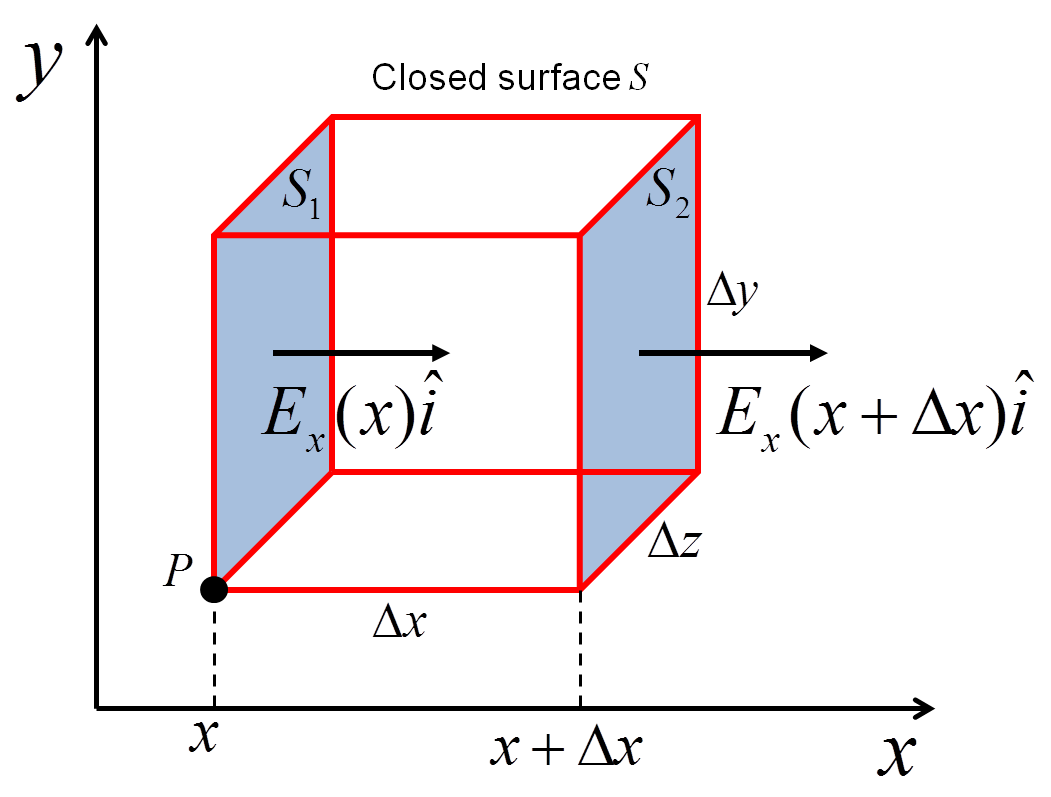Divergence Derivation
Here is the definition of divergence again, we need to use this to derive our operation! $$ \mathrm{div}(\vec{E}) \equiv \lim_{\Delta V \rightarrow 0} \frac{1}{\Delta V} \oint _S \vec{E} \circ \hat{n}dA. $$ Consider a vector field \( \vec{E}(x,y,z) = E_x \hat{i} + E_y \hat{j} + E_z \hat{k} \), we want to measure the divergence from the point \( P \) located at \( (x,y,z) \). A cube of volume \( \Delta V = \Delta x \Delta y \Delta z \) is located within the field with one corner at \( P \). The flux that leaves through this cube can be broken down into three parts, \( \Phi_x \), \( \Phi_y \) and \( \Phi_z \), which is the flux in the \( x \), \( y \) and \( z \) directions respectively. $$ \oint _S \vec{E} \circ \hat{n}dA = \Phi_x + \Phi_y + \Phi_z $$ If we substitute this back into our definition we get $$ \mathrm{div}(\vec{E}) \equiv \lim_{\Delta V \rightarrow 0} \frac{1}{\Delta V}(\Phi_x + \Phi_y + \Phi_z) $$ Let's focus on the \( x \) direction first. The flux in the \( x \) direction is the flux through the two surfaces \( S_1 \) and \( S_2 \). $$ \Phi_x = \int_{S_2} E_x \hat{i} \circ \hat{i} dA - \int_{S_1} E_x \hat{i} \circ \hat{i} dA $$ $$ = \int_{S_2} E_x dA - \int_{S_1} E_x dA $$

